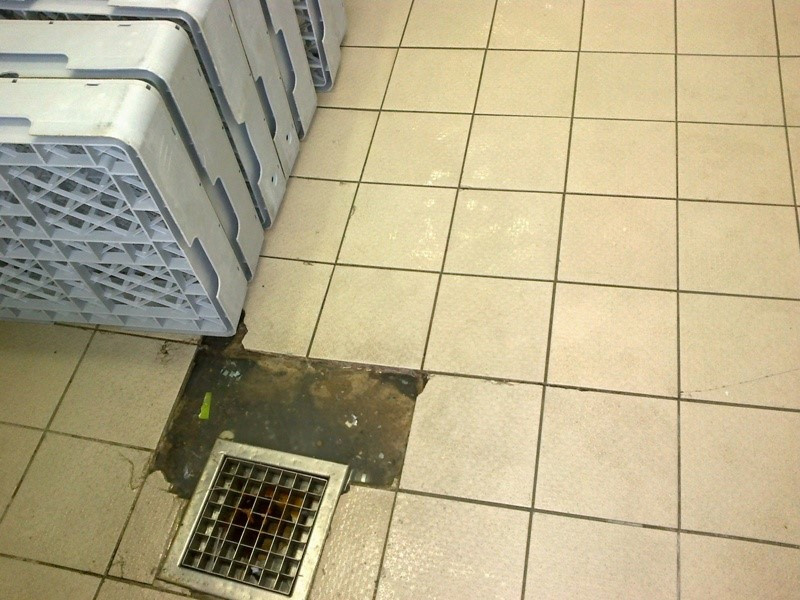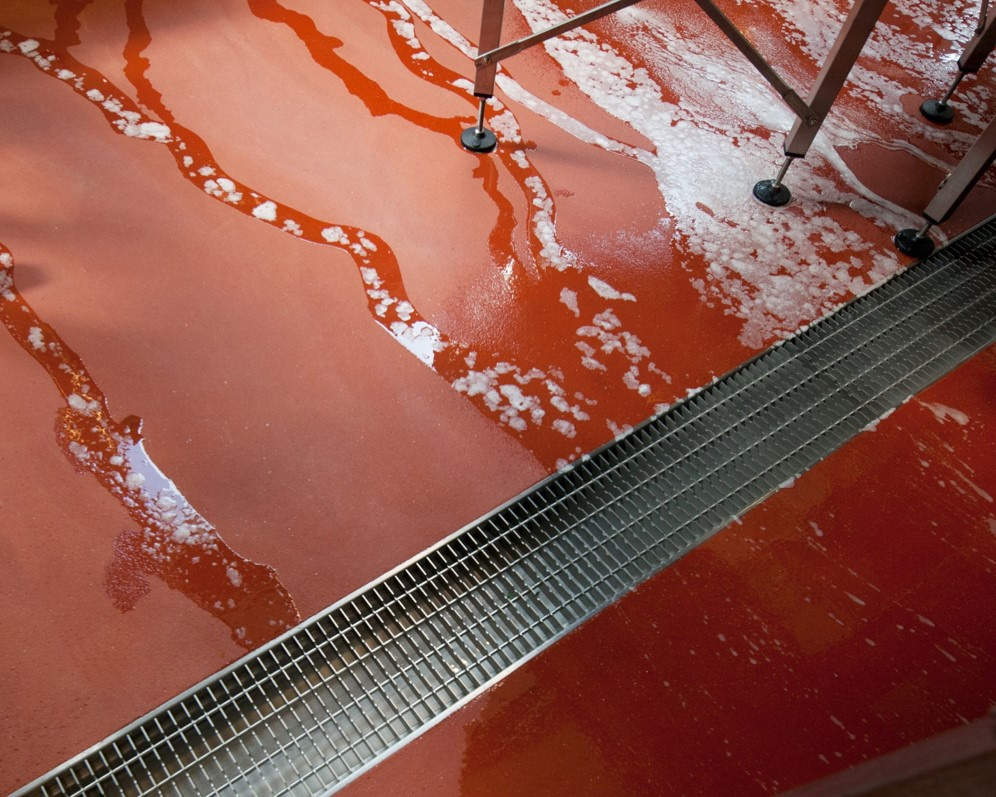Reducing slips, trips and falls
Any application must be designed to avoid slips and trips, but commercial and industrial food and beverage production is particularly dangerous with hot equipment, boiling water and oils exacerbating the risk of slips and trips and worsening the outcome.
 Along with good operational practice, there are three principals designers should follow to help reduce the risk of slips, trips and falls in commercial and industrial food and beverage applications:
Along with good operational practice, there are three principals designers should follow to help reduce the risk of slips, trips and falls in commercial and industrial food and beverage applications:
- Select grates and flooring with the same and correct slip resistance rating;
- Ensure any objects within the floor, such as the drain, are flush with the finished floor level;
- Remove liquid and food from the floor with flooring that slopes towards the drain.
This month, we explore these three principals in greater detail – check it out below.
Selecting the correct and same level of slip resistance for the grate and floor
AS 4586 Slip resistance classifications of new pedestrian materials is the Australian Standard that specifies the test methodologies for slip resistance tests. There are a number of slip resistance tests, but the oil/wet inclining ramp test is the most applicable for commercial kitchens and food processing environments as it simulates an oily, wet floor. This test gives “R” ratings from R9 (lowest level of slip resistance) to R13 (highest level of slip resistance).
HB198 Guide to the specification and testing of slip resistance of pedestrian surfaces is the associated handbook with AS 4586. HB198 gives practical advice on the minimum level of slip resistance for a variety of applications – below is an extract.

HB197, the predecessor to HB198, provided more detailed advice on different applications. Whilst it has been superseded by HB198, it can be used for reference of additional applications. Below is an extract:

You can read more about AS 4586, HB198 and the various slip resistance test methods here.
As a long-time drainage manufacturer, at ACO we often have designers request a grate with the highest slip resistance rating, whilst unknowingly specifying a lower level slip rated floor.
The grate is often perceived as slippery and so designers, with good will, over-specify the slip resistance of the grate, but forget about the floor. It is recommended to specify the same slip resistance rating for both the grate and surrounding floor surface to avoid introducing trip hazards arising from surfaces with differential slip ratings.
What you can do:
- Use the oil/wet ramp slip resistance rating ( R ) classification for commercial and industrial applications to guide on the appropriate level of slip resistance – referring to HB198 for guidance
Request slip resistance certificates from your drainage and flooring suppliers to ensure they have the same rating.
Ensuring objects within the floor are flush
The level installation of flooring is critical to properly draining the floor (more on this later) and to prevent hazards. Work with specialist flooring contractors to help ensure a professional and level installation.
The drainage must be installed flush with the floor level to prevent slips and trips. If there’s any damage to the floor, it should be repaired by specialist contractors immediately.

Removing liquids from the floor
The last principal is removing liquids from the floor as quickly as possible to reduce the risk of slip. In addition to the floor falling towards the drain (usually at 1:100 falls), the layout should be designed with consideration for the usage of the zone. For example, if it’s a wet production area, additional drainage will likely be required.
At ACO we can help determine the type and size of channel or floor waste required for the application. Click here to askACO.

We’re here to help. Please contact your local sales representative for more information.






